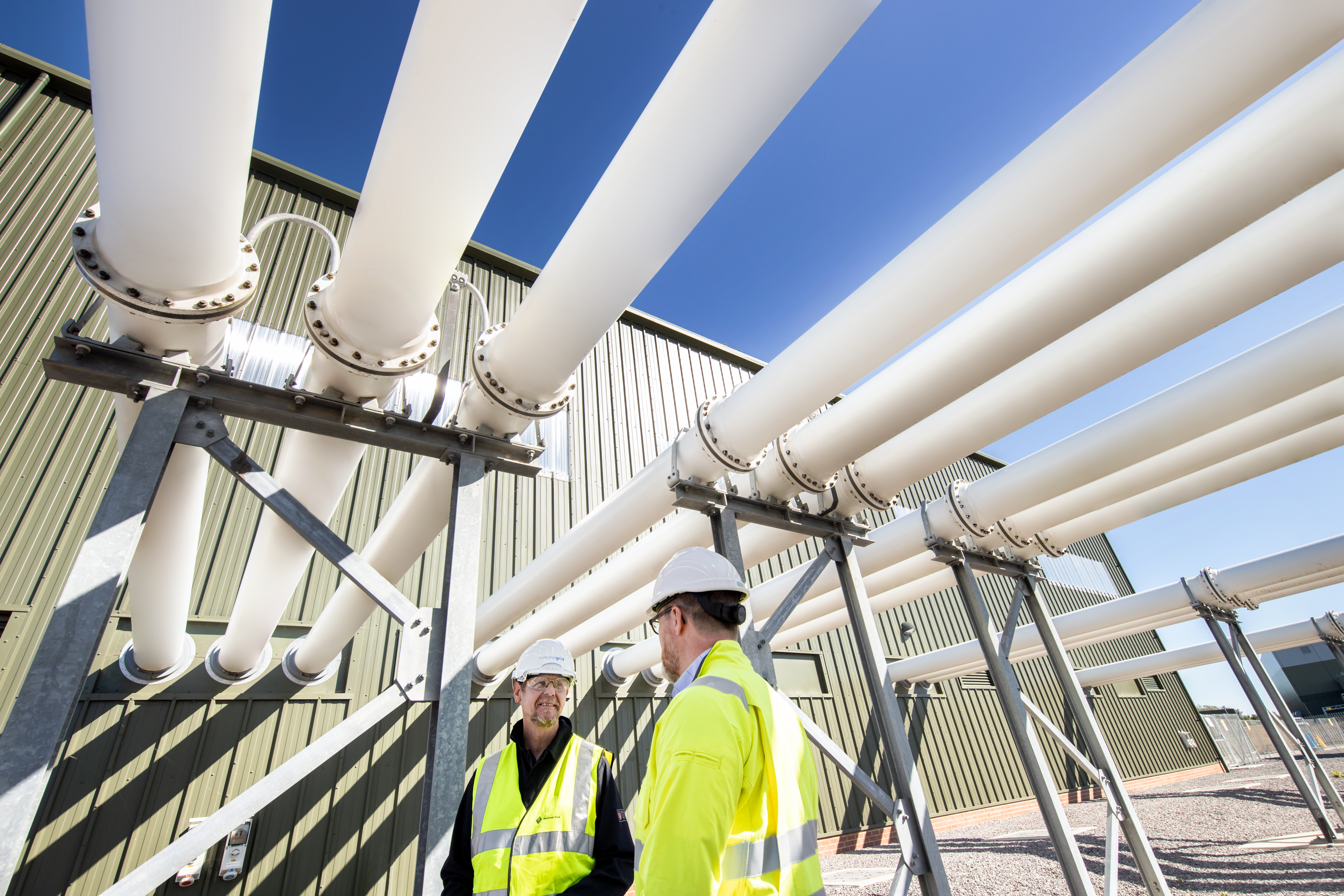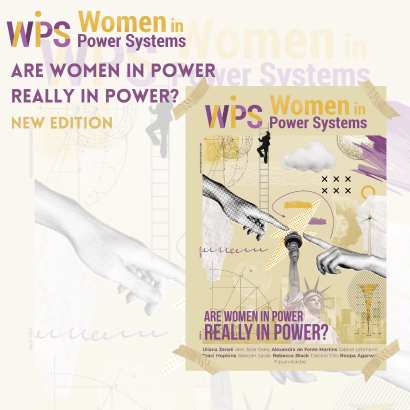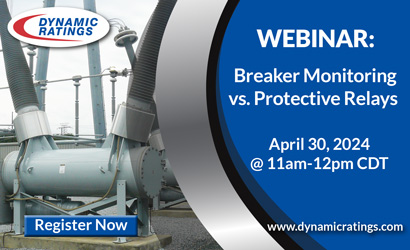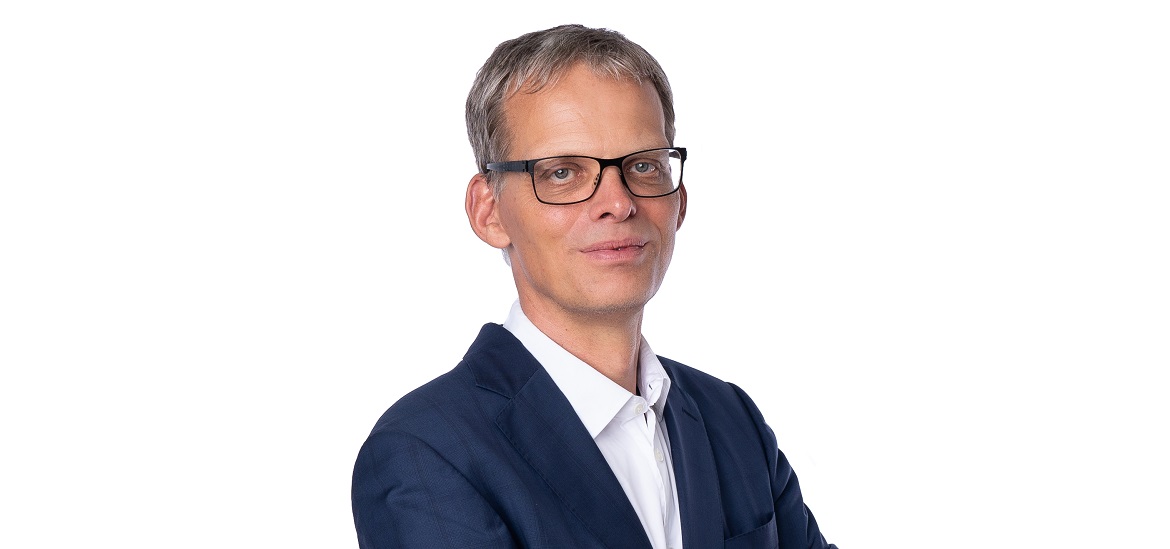
FEATURE INTERVIEW
Interview with MARKUS HEIMBACH
Executive Vice President and the Managing Director at Hitachi Energy
To watch the full interview click HERE
SF6-free high-voltage technology needs to be reliable and scalable in order to achieve the lowest carbon footprint and accelerate the energy transition.
Alan Ross
Hello, I am Alan Ross, the Managing Editor of APC Media. I am thrilled to have as my guest today Markus Heimbach. Markus is the Executive Vice President and the Managing Director at Hitachi Energy for High Voltage Products. Markus, welcome. Thank you for being here today.
Markus Heimbach
Thank you very much for inviting me, Alan.
AR
Today I want to talk to you about SF6 because it is such a big topic in the industry right now and rightfully so. But before we get there, I want to ask you a little bit about your background. I know you were with ABB for 20-some-odd years prior to the Hitachi ABB transformation. So how long have you been in your current role?
MH
I have been with ABB, then Hitachi ABB and then Hitachi Energy for more than 25 years in total. And I have been in my current role for roughly four years.
AR
Excellent. Therefore, you've got a great background in high voltage. You've also got a great background in SF6 gas and that's specifically what I want to talk about. People may not know but it has been a brilliant insulator for a lot of primary breakers, and a lot of products. Tell me a little bit about when SF6 first came on the market. What was the thinking back then?
MH
As you already said, Alan, SF6 is a brilliant gas for insulation; it helps high-voltage products become more and more compact. SF6 is not only very good when it comes to insulation, but it is also a brilliant gas when it comes to arc quenching or basically interruption, which is the primary goal of every circuit breaker. So, with these two excellent possibilities that SF6 provides, it was a revolution in the high-voltage industry to make the whole equipment more cost-efficient, smaller, and more compact, reducing the footprint for the substations and enabling the development of a gas-insulated switchgear, which is reducing 95% of the complete footprint compared to air-insulated switchgear substation.
AR
In consequence, we know it was a revolution and it was great. However, on the flip side, there's a problem with SF6. Now, talk a little bit about that.
MH
As said, we have these two brilliant properties of SF6 the insulation and the interruption. But on the other hand, it is also one of the most potent greenhouse gases. It has a global warming potential in the range of 25,000. It stays in the atmosphere for more than 3000 years. Even though the overall contribution of SF6 to global warming is not high percentage-wise, it's still in the range of 0.5%. And considering the use of SF6, it is not negligible. Hence, there has been ever-increasing pressure over the last decades to phase out SF6, with all the global warming and climate change discussions.
AR
It seems like there are a lot of different companies that are taking this approach. And my concern was that we had different standards and the ultimate end user was going to be confused about how one was to replace SF6. Could you talk a little about the standard that was developed for all the companies, including Hitachi Energy, creating alternatives for SF6?
MH
At the moment, we can say that there are mainly three global competitors working in that area in high-voltage products. At the very beginning, each of them had their own solution. We then all started looking at what would be best for the industry and somehow, we came together with GE and agreed on a very similar solution that has the same foundation. It's for sure different when it comes to the breaker itself, and it's different when it comes to the switchgear, but it's basically using the same solution, just as SF6 was a similar solution for the industry until now. I do believe this is important because the customer doesn't want to deal with the complexity of every supplier and their different solutions. So, from that point of view, this was a move to enable a faster transition.
AR
When you do that, look at things from the perspective of the end users, what are the things that you, the developers of the replacement technology should be thinking about? What are the things that they should consider with these major changes?
MH
First and foremost, the new solution has to be as reliable as SF6 is today. Otherwise, we cannot provide reliability to the equipment and to the overall grid. Secondly, we need to achieve a balance between a gas that is as good at interruption and insulation, but is significantly better than SF6 when it comes to the global warming potential. And at the end of the day, we also need to have a solution that somehow fits into the concept of the existing substation.
The new solution has to be as reliable as SF6 is today... Secondly, we need to achieve a balance between a gas that is as good at interruption and insulation, but is significantly better than SF6 when it comes to the global warming potential... And at the end of the day, we also need to have a solution that somehow fits into the concept of the existing substation.
AR
So SF6 is kind of ubiquitous. Is it and the new alternative solution interchangeable for the end user?
MH
First of all, what is in this big transition? We are not going from one gas to another gas. We are going from a gas to a gas mixture. We are using CO2, which is the second-best when it comes to interruption. And we are using a gas which is called C4-flouronitriles for improving the insulation performance of the CO2, which is the main gas or the carrier gas. Then, we need the O2 to prevent soot after switching. So that is basically the gas mixture that we and GE are using. As a result, the gas is interchangeable with the equipment from the customer to maintain the gas filling and all this equipment.
AR
Okay, so that makes it a lot easier. But when we say SF6 gas, there's one. What are we going to call this? Just new gas? What has Hitachi Energy named their solution?
MH
Our solution is called EconiQ.
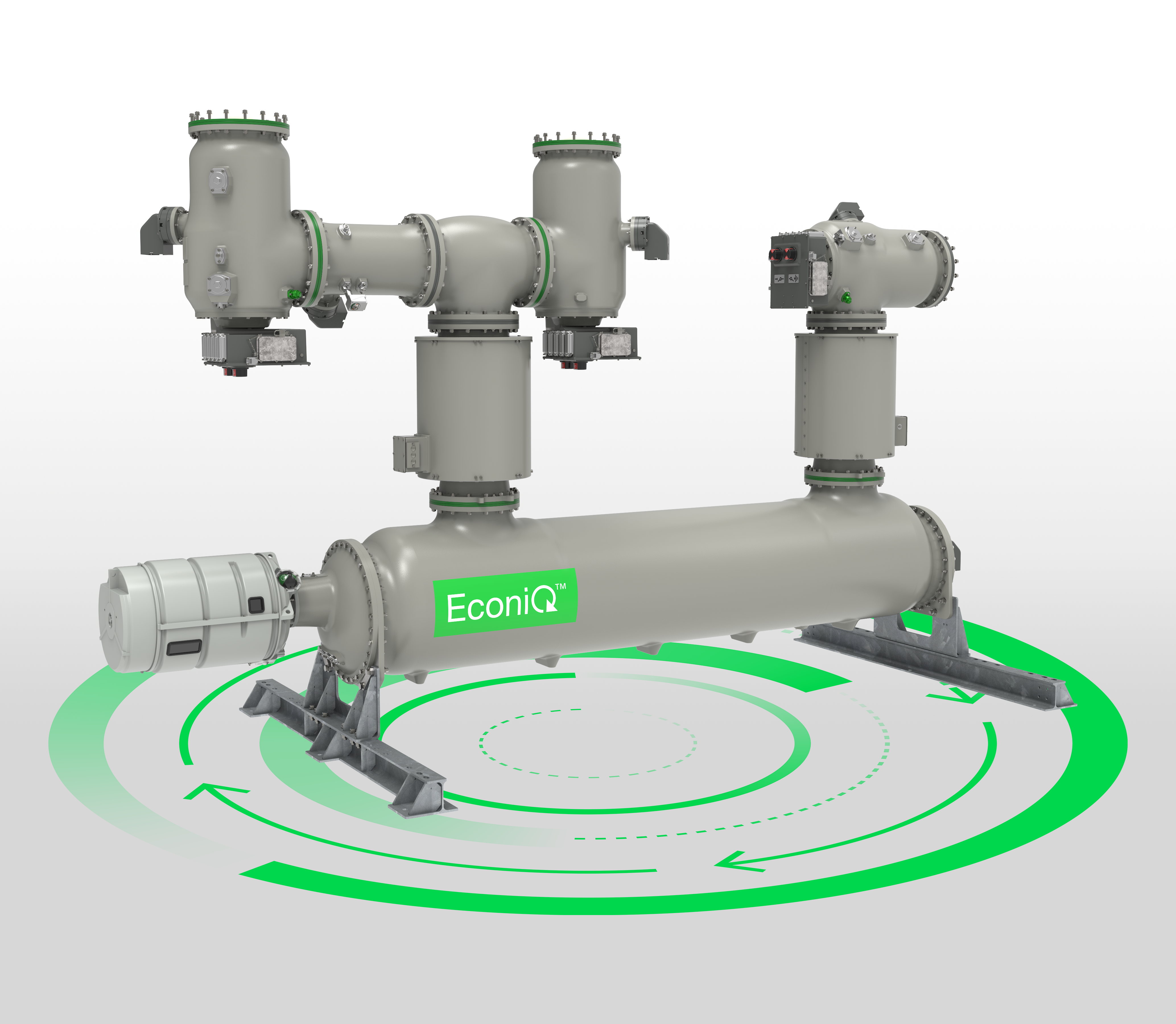
Hitachi Energy’s breakthrough EconiQTM 420-kV circuit-breaker unlocks the widest range of eco-efficient switchgear applications.
AR
I really appreciate you sharing the insight because right now there is a lot going on in the high-voltage world. There's a lot going on in the utility world. And being able to have companies work together to solve a problem is the only way that we're going to move forward. There will be no one proprietary solution for the most part, right? And the fact that companies have worked together to create a solution, thinking of the end user is fantastic.
Tell me, Markus, what do you think is the normal utility timeline for changing things out?
MH
It's a huge challenge and it cannot be done by just one company. It is a huge challenge for us to develop a portfolio. At the end of the day, we need to have a portfolio which is matching the whole SF6 portfolio in all voltage ranges, interruption, and current ranges, which have been developed for decades. And now we have a huge pressure to phase out SF6, mainly within this decade, at least in Europe and probably soon in the US as well. It is a huge effort to have good people who are able to develop this new solution. When it comes to the timeline, from a utility point of view, we are now undergoing the last type test for a 420 kV solution. We have already sold pilots to both Eversource, for dead tank breaker to the US.
We have also sold to TenneT and to National Grid in Europe, 420 kV GIS, which will be installed somewhere between the middle of this year and the end of next year. We are now about to industrialize the solution and we can ramp up our offer so that we can provide the market according to the needs for SF6-free switchgear as soon as possible and across voltage ranges. And our overall goal is to have the whole portfolio developed around 2025.
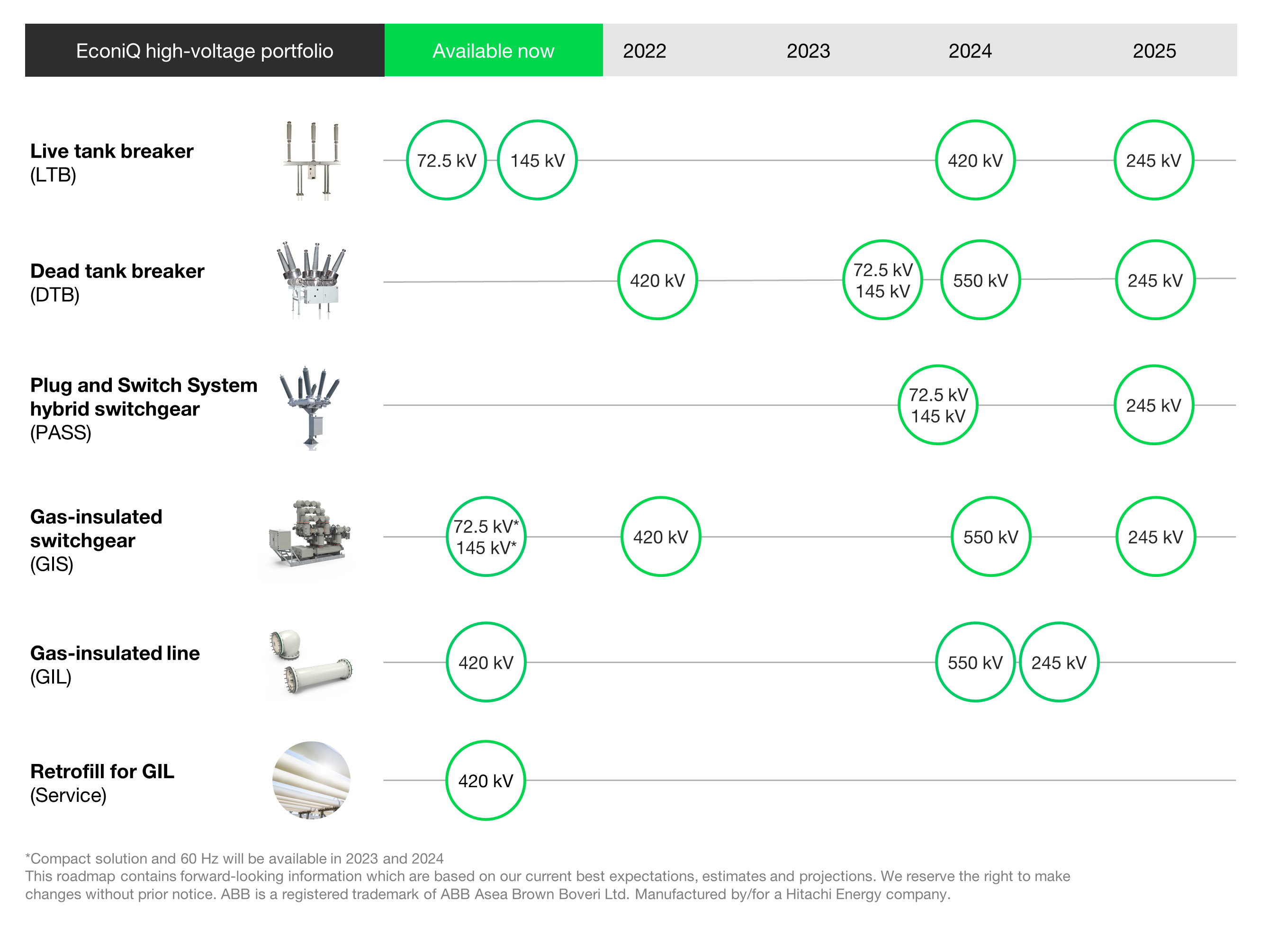
Hitachi Energy’s EconiQTM high-voltage portfolio roadmap eliminates SF6 and accelerates the energy transition.
AR
That's still a very aggressive solution time-wise. This ground-breaking and I applaud Hitachi Energy and your peers who have worked on this because sometimes these solutions get talked about, but they're not practical to implement. And you've got a practical implementation of that. I appreciate that. Is there anything else you would like to reflect upon?
MH
The huge transformation which we are doing here in Hitachi Energy being the spearhead of the industry is only possible when you have brilliant people on your team. And when you have as well, people who are not only brilliant but who work as one team. You need to have a seamless approach going forward. And what helps us here very much as it is not just the technical challenge of building up a portfolio. Also, it is something that is good for the people and for society. And this is a huge motivation that makes everybody go the extra mile to go achieve the roadmap that we have defined. And I appreciate that you are commenting on how aggressive it is.
AR
One of these factors that are crucial in making this happen is the next generation of engineers. They want to make the world a better place. What you have done and what you are doing does exactly that. So, anybody who's thinking about going into this industry, will work with people that make the world a better place. Thank you for doing that, Markus. You're one of the leaders that is spearheading that, and I appreciate that very much.
MH
Thank you very much, Alan. It was a pleasure to talk to you.
